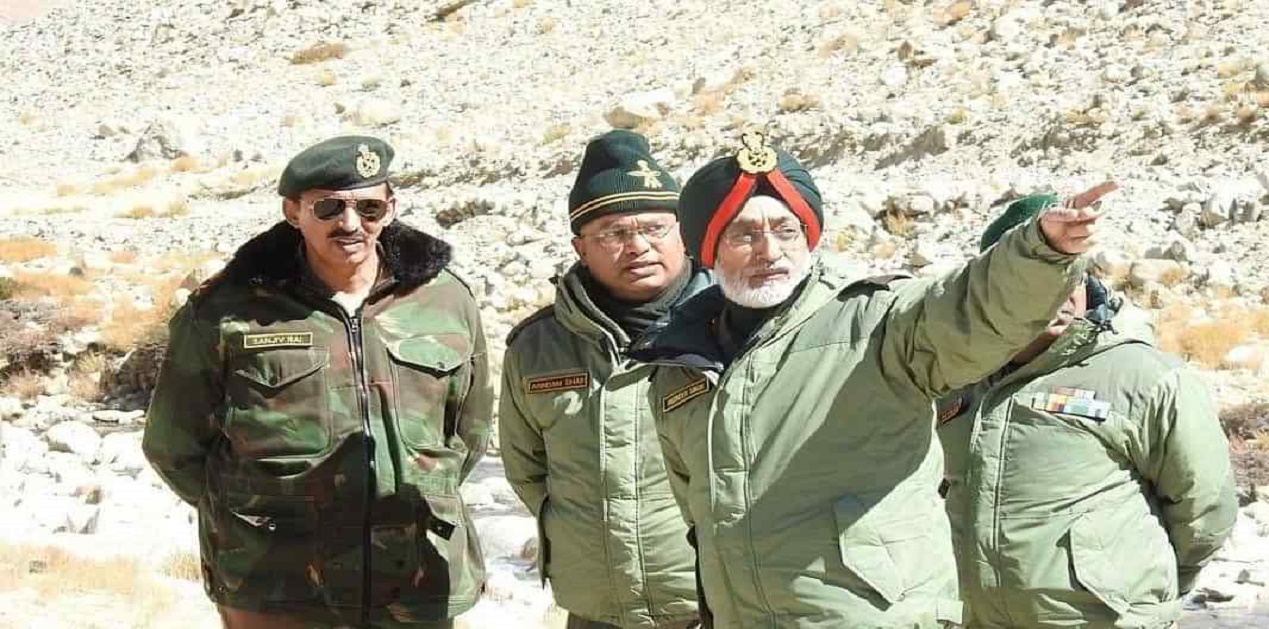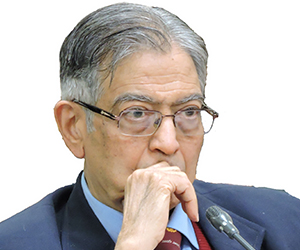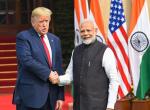The ongoing Sino-Indian faceoff at several points in Ladakh as well as at Naku La in Sikkim have brought the relationship to an inflexion point. While examining the extraordinary gravity of this face off -- a product of Chinese duplicity and aggression--clarity about its causative factors is imperative in order to determine India's moves to address this issue.
Sino Indian face offs along the LAC are not unusual. Over the last decade itself several serious ones have taken place. All were ultimately resolved and none resulted in any loss of life. Indeed, the last face off which resulted in a few lives lost was at Tulung La in Arunachal Pradesh way back in 1975.
The current Sino Indian faceoff began in early May following a sharp Chinese troop build up in areas along the Line of Actual Control (LAC) particularly in Ladakh under the guise of annual exercises. The faceoff has been marked by aggressive Chinese posturing along with scuffles between Indian and Chinese troops in the Pangong Lake area, Naku La in Sikkim, and most recently in the Galwan Valley on 15-16 June. In the earlier two scuffles scores of Indian soldiers were injured but there was no loss of life. In the Galwan Valley incident, however, India lost 20 soldiers and China around double that number. Had China abided by the understanding to disengage arrived at by the military commanders of both sides on June 6 this would have been avoided. Contrary to this understanding, China not only continued to maintain troops in the Valley but also erected a structure in it. On being found out by an Indian patrol Chinese troops retaliated with stones, clubs with metal spikes, and batons fortified with barbed wire in gross violation of the CBMs in place which required them to exercise utmost restraint. It is only appropriate, therefore, that the External Affairs Minister in his talk on 17 June with his Chinese counterpart accused China of "premeditated and planned action" resulting in the violence and casualties in the Galwan Valley.
Talks between the Divisional Commanders of the two sides to defuse the crisis on 17 June have not been conclusive, heavy military build up along the LAC continues unabated, and disengagement is far from complete. Accordingly, the situation remains tense with China claiming for the first time that the Galwan Valley is on its side of the LAC and India refuting the same. Another round of talks between the military commanders of both sides is scheduled for the week commencing 22 June. Diplomatic level talks are also likely to ensue.
The current Sino-Indian faceoff is much more serious than earlier ones on a number of counts. Firstly, while earlier face offs were restricted to a single point this one is strung across several hundred kilometres encompassing several contentious areas. Clearly, therefore, the Chinese action is not locally driven but constitutes a well considered initiative with clearance at the highest level. Secondly, the number of PLA troops employed is much larger than earlier. Thirdly, the PLA troops have been far more aggressive than on earlier occasions. Fourthly, the CBMs requiring the exercise of utmost restraint were blatantly disregarded by the PLA which came prepared for physical engagement with weapons specifically designed to not merely to kill but inflict horrific and permanent injuries contrary to the canons of war. Finally, this faceoff constitutes the largest military engagement between the two countries since September 1967 at Nathu La when India lost 80 troops and China 400.
Many factors have been adduced for China's latest aggression along the LAC such as India's border infrastructure build up, it's amendment of Article 370, it's restraints on Chinese investments in India, its closer links with USA, its increased activism in Quad and in South East Asia, its opposition to CPEC, etc. Some of these factors along with the Xi Jinping's rising unpopularity at home triggered by China's economic slowdown and the mishandling of the Covid-19 pandemic may to an extent have influenced China's recent aggressive moves not only against India but also against Australia, Vietnam, Indonesia, Malaysia, Japan, the Philippines, not to speak of Taiwan, and Hong Kong.
It is, however, the toxic melange of China's hegemonic urge, India's commitment to strategic autonomy, and the latter's shortfall in deterrence capability which is largely responsible for the present clashes across the LAC. Over the last four decades China's comprehensive national power has grown exponentially as compared to India's particularly in the military and economic sphere. Moreover, India’s overly accommodative stance towards China, even when it has acted against the former's core national interests, rather than penalising it has sent a message of weakness which encourages it to treat the former as a paper tiger. This submissive approach in India's dealings with China is illustrated by its acceptance of the concept of an undefined and differently perceived LAC in 1993 which lent an in built inevitability to face offs which have long plagued Sino-Indian ties and which signalled a loss of will to recover the areas lost to Chinese aggression. China's disinclination to sincerely work towards the delineation of the LAC, or even to share its perceptions thereof, is indicative of its intent to deliberately keep it nebulous with a view to facilitate its nibbling of Indian territory which it has been doing since long. The CBM's too have worked to India's detriment as China observes them selectively.
It is to be hoped that the recent standoff with China will serve as a much needed wakeup call and India will do all that is necessary to take the requisite measures to check the former's aggressive moves. Doing so would require acting with a cool mind and avoiding rash actions but with a steadfast sense of purpose no matter what the cost.
Government's initial steps notably the firm and measured statements made by the External Affairs Minister and the Prime Minister on 17 June, the convening of an all party meeting on 19 June which lent its unequivocal support to the government, the initiation of moves to curb Chinese exports to India, and the clearance accorded to our armed forces to use weapons as required on the Sino Indian border, are inspiring. The decision to participate in the Russia India China (RIC) Foreign Ministers’ meeting on 23 June was, however, avoidable. Much like India's boycott of the SAARC Summit due to Pakistan's reprehensible conduct we ought to have made known that we would not participate in the RIC meeting so that our displeasure with China was more forcefully demonstrated.
In the coming days if China does not withdraw its forces from areas within our side of the LAC, as in the Fingers area, we must, depending upon the military possibilities, either evict them or seize areas on their side of the LAC. This is imperative so that China realises that it can no longer get away with seizing Indian territory at minimal cost. If this leads to a larger conflict so be it. China is unlikely to undertake this risk as it would place in jeopardy its quest for the global sweepstakes on which it has set its sights.
We should use this opportunity to call on China for an early settlement of the boundary issue or at least a delineation of the LAC in a time bound framework. In case China procrastinates we should make known that we see no advantage in continuing to accept in eternity the concept of an ambiguous LAC and its associated CBMs which they observe selectively and under the guise of which appropriate Indian territory.
To lend meaningful substance to our anger at China's actions during the current face off we should announce that Huawei will not be allowed to participate in the upcoming 5G spectrum auction.
India may also consider exposing China before the international community for having used weapons in the recent stand offs which caused "superfluous injury" or "unnecessary suffering" and which are expressly prohibited in situations of International Armed Conflicts under Part III Section I Article 35 of the 1977 Additional Protocols to the 1949 Geneva Conventions. Whether or not the current face off legally qualifies as an International Armed Conflict use of such weapons is nevertheless reprehensible under any circumstances. Accordingly, this is the very least that must be done not only for our brave hearts but also to flag the point that China's barbaric behaviour raises questions on its credentials to be considered as a civilised country.
India should make it a point to provide in depth briefings to the international community on the recent happenings in Sino-Indian relations including China's violation of the rules of war in the recent standoff. This is essential as failure to do so will give China the opportunity to fill the vacuum with its own narrative. Indeed, on this and other critical issues we must have a high level and well equipped multi disciplinary media team which presents the correct narrative promptly both in India and abroad.
As an immediate riposte to China's actions against India's core interests we need to actively play the Hong Kong, Uighur, Tibet and Taiwan cards. On the first three we should be outspoken at regional and international fora on the horrific human rights violations being visited on these areas by China. Our support to the Uighur people will also win us plaudits in the Islamic world, will be a slap in the face of Pakistan and will silence Islamic critics of India. In respect of Tibet we need to give the Dalai Lama a free run of the country. He should be permitted to freely interact with our dignitaries and should be invited to select state functions. As regards Taiwan, short of moving away from our one China policy, we should maximise interaction with it including at the official level. We should also press for its participation in the WHO as an observer.
Apart from the aforesaid immediate moves, China's existential threat to India and the huge power differential between the two demands that the latter evolves a multi pronged strategy to address the situation. Such a strategy must rapidly ratchet up India's military and economic capabilities in order to narrow the power differential vis a vis China. It must additionally entail the use of deft diplomacy to shore up its support and standing internationally and in the neighbourhood.
(The paper is the author’s individual scholastic articulation. The author certifies that the article/paper is original in content, unpublished and it has not been submitted for publication/web upload elsewhere, and that the facts and figures quoted are duly referenced, as needed, and are believed to be correct). (The paper does not necessarily represent the organisational stance... More >>
Image Source: https://www.thequint.com/news/india/lt-gen-harinder-singh-indias-representative-at-india-china-talks-6-june











Post new comment